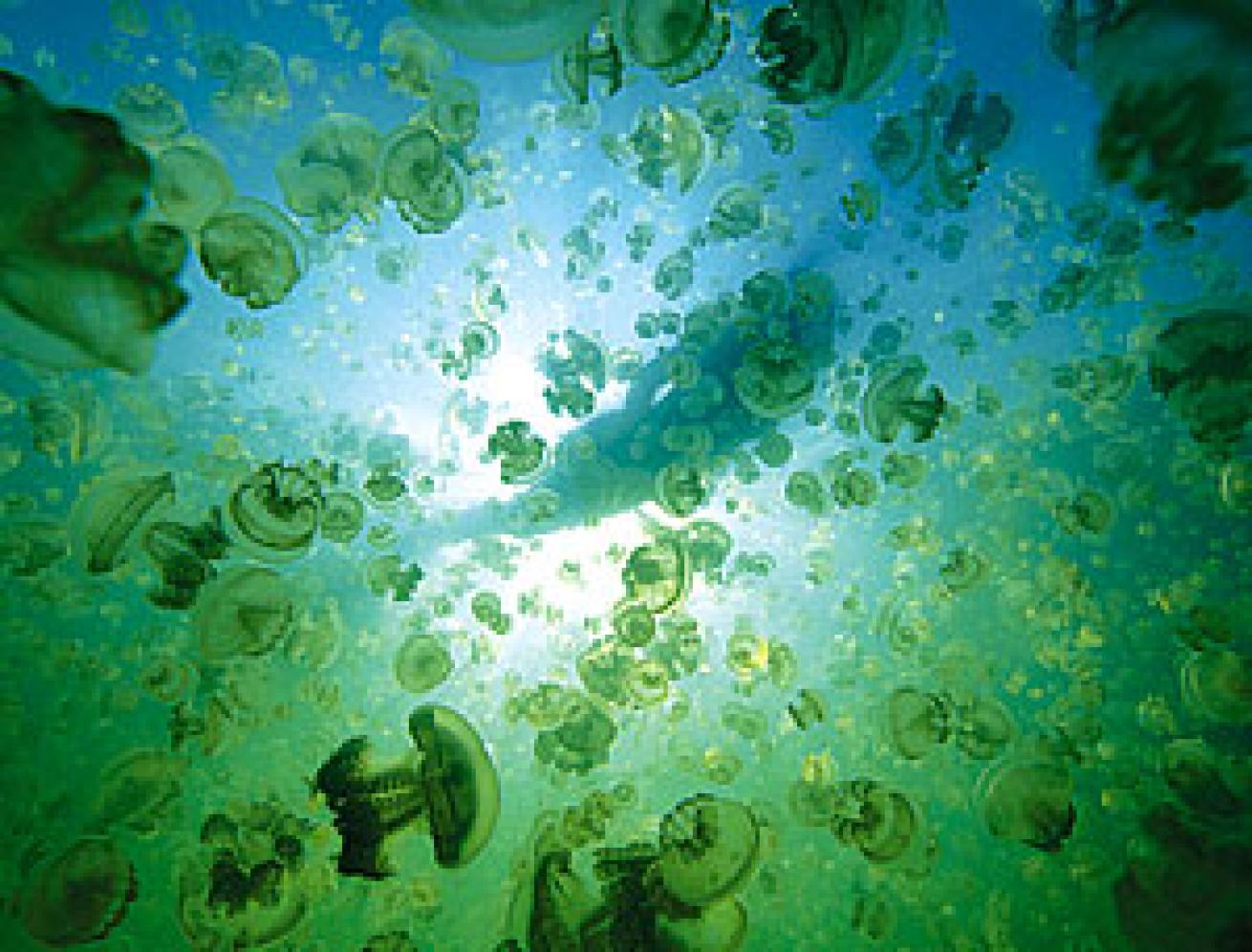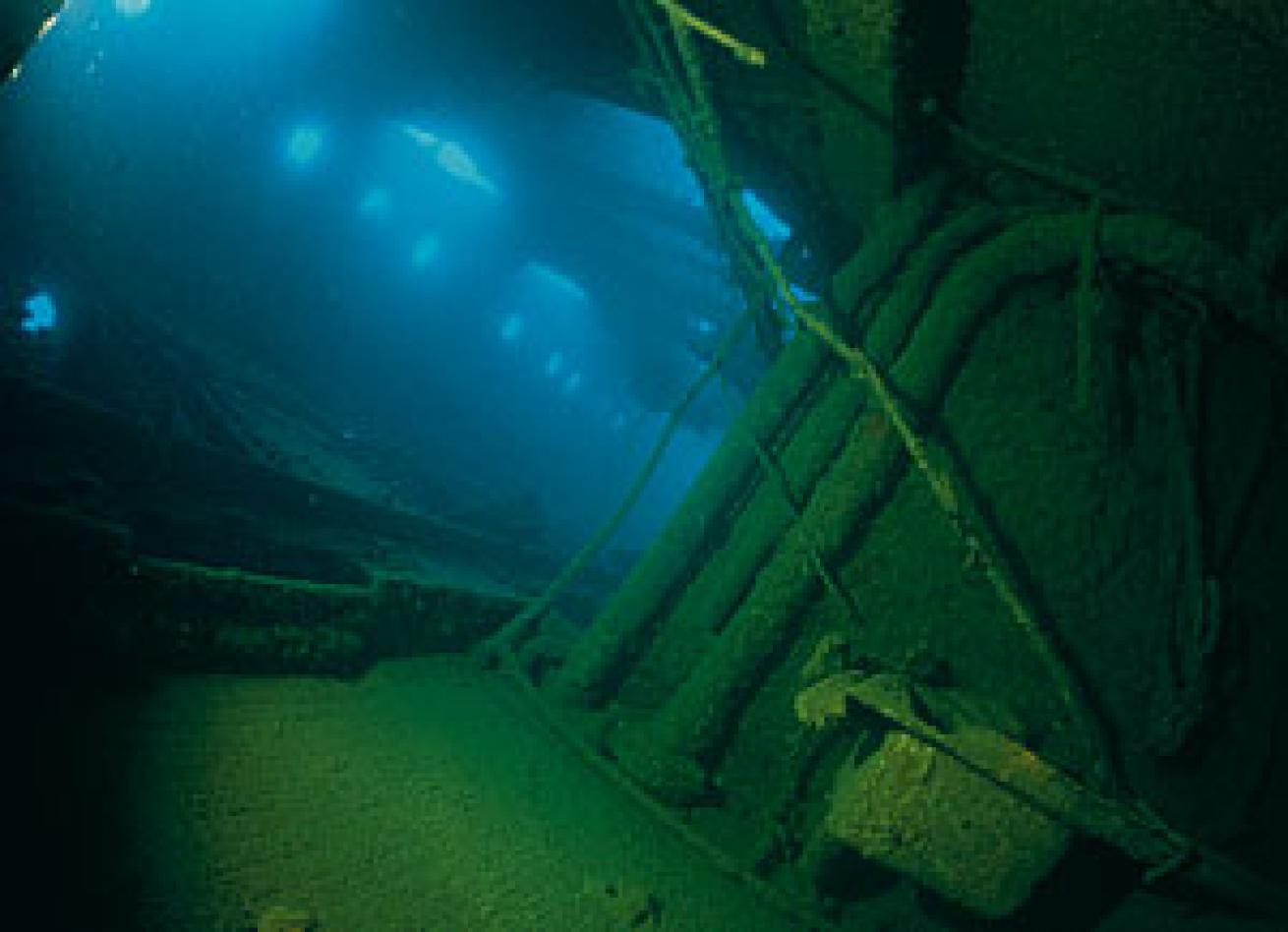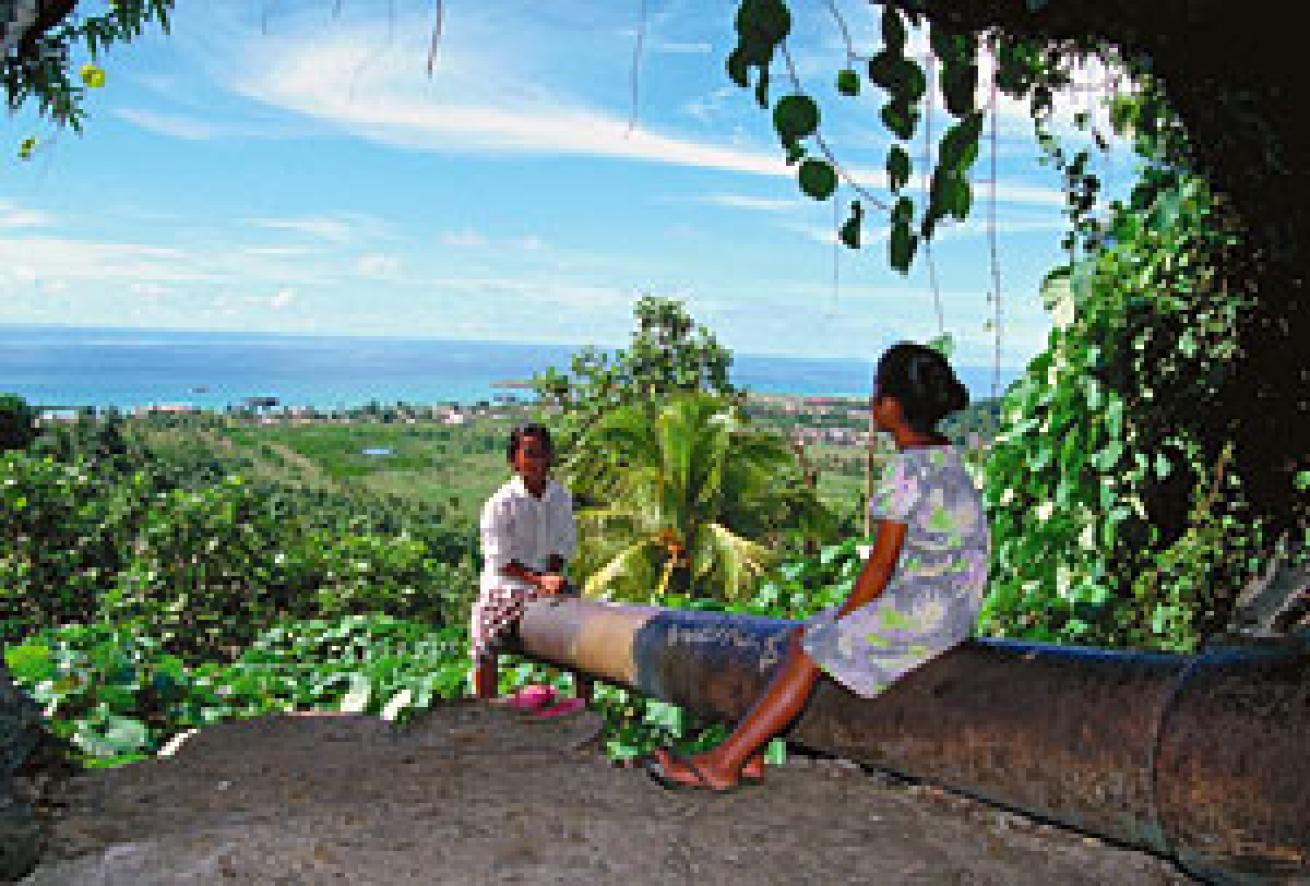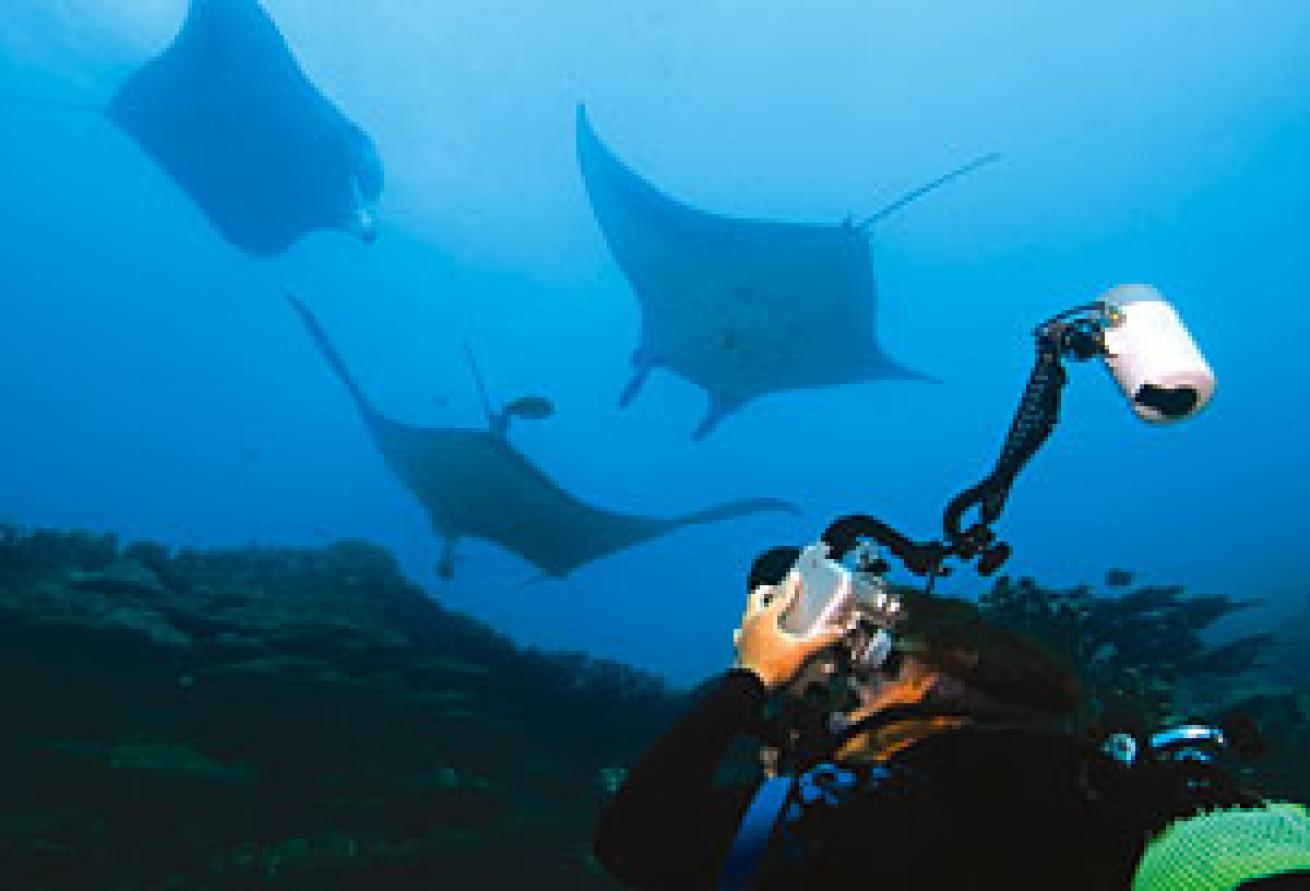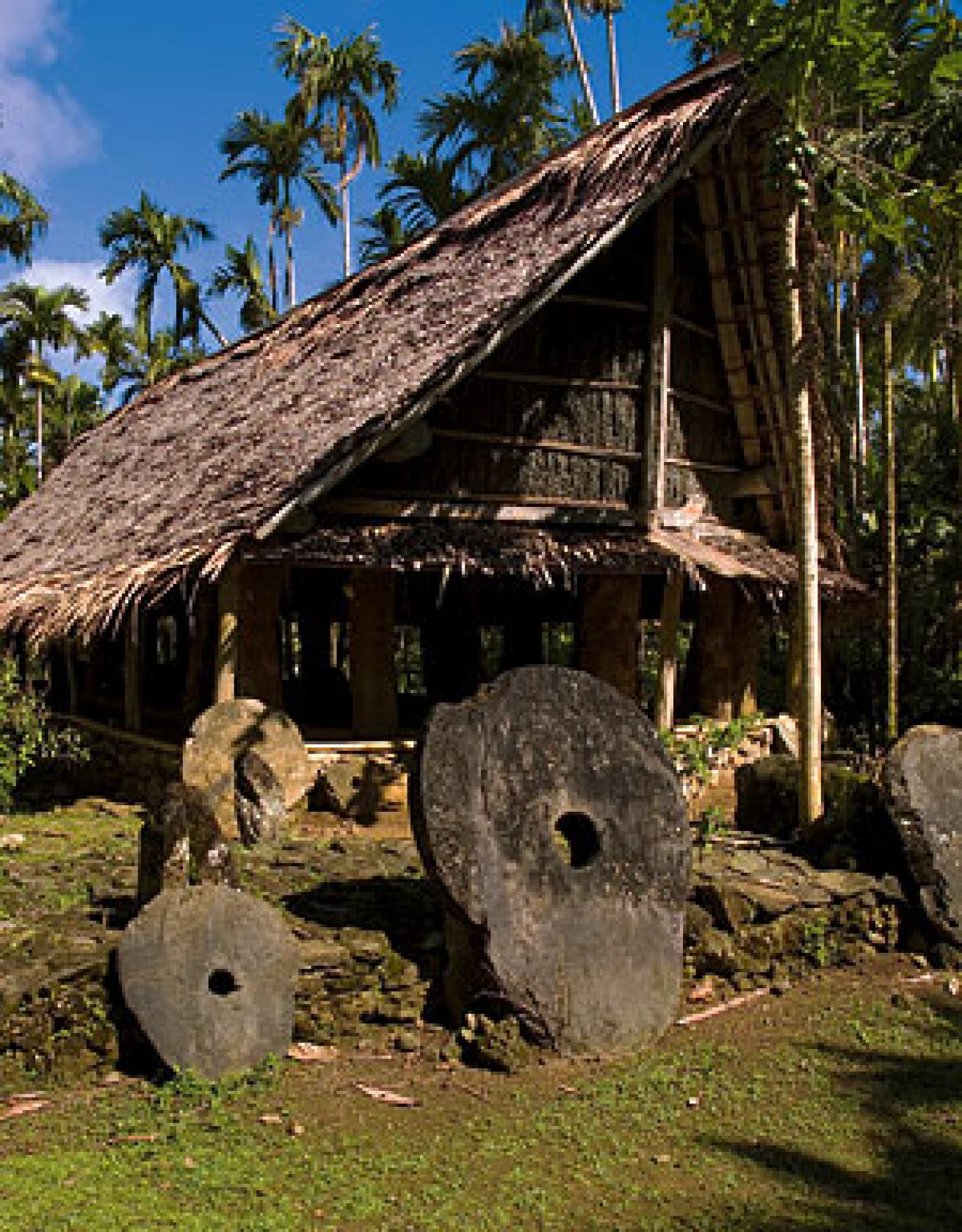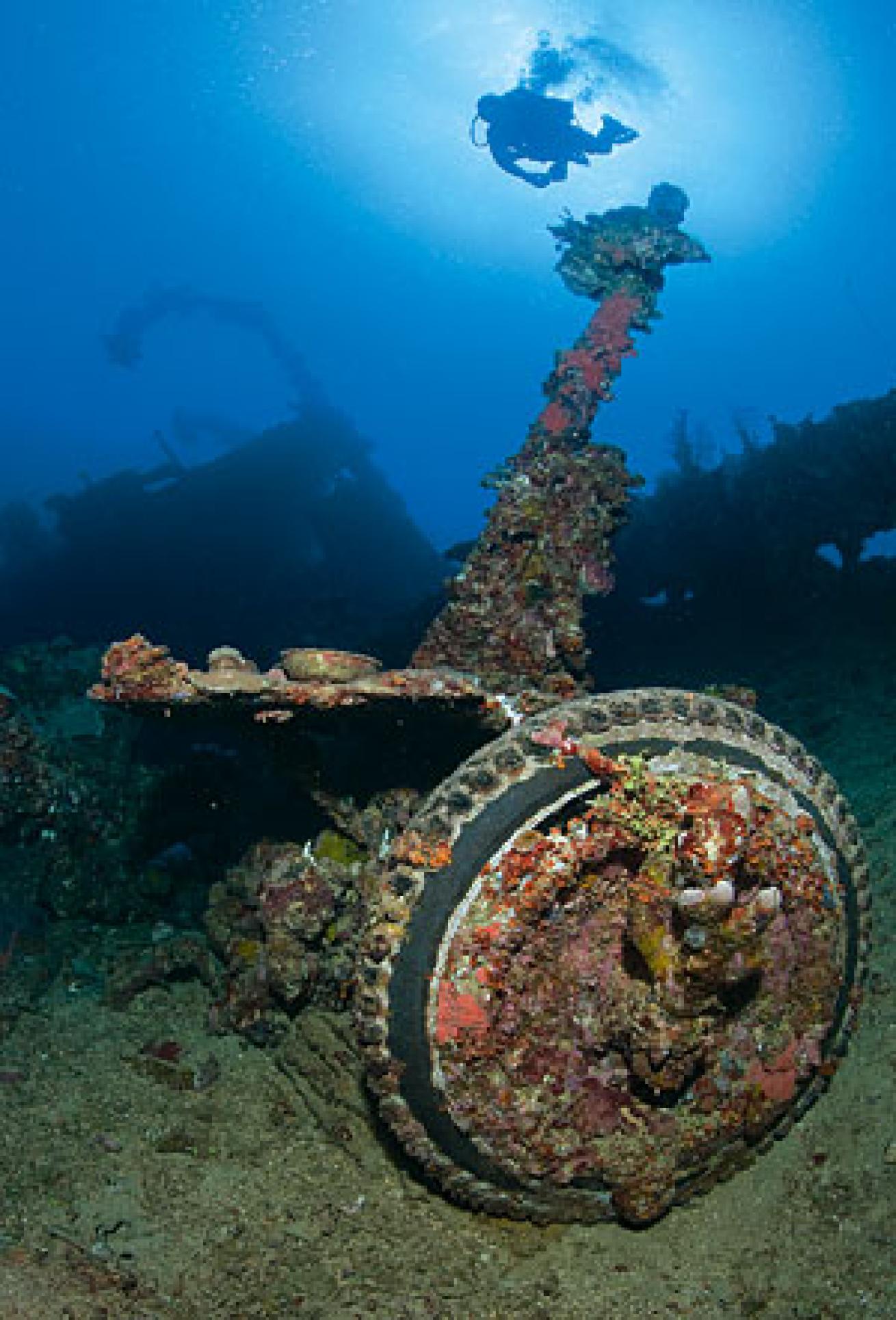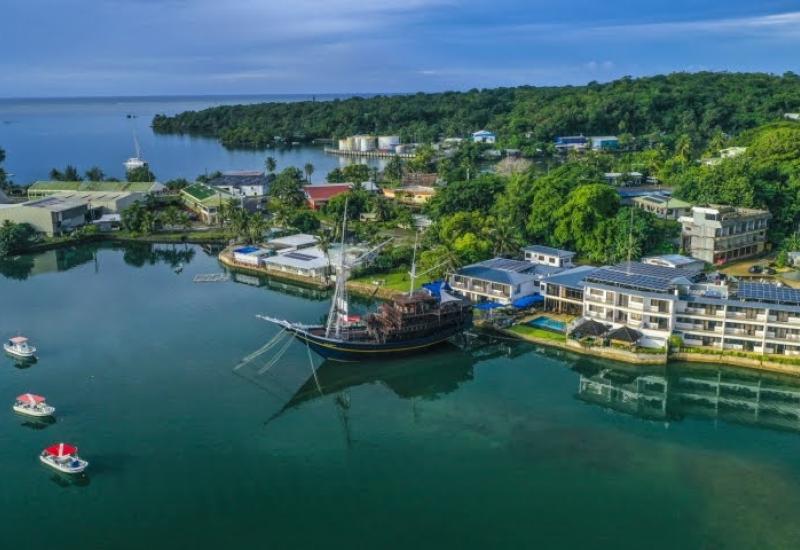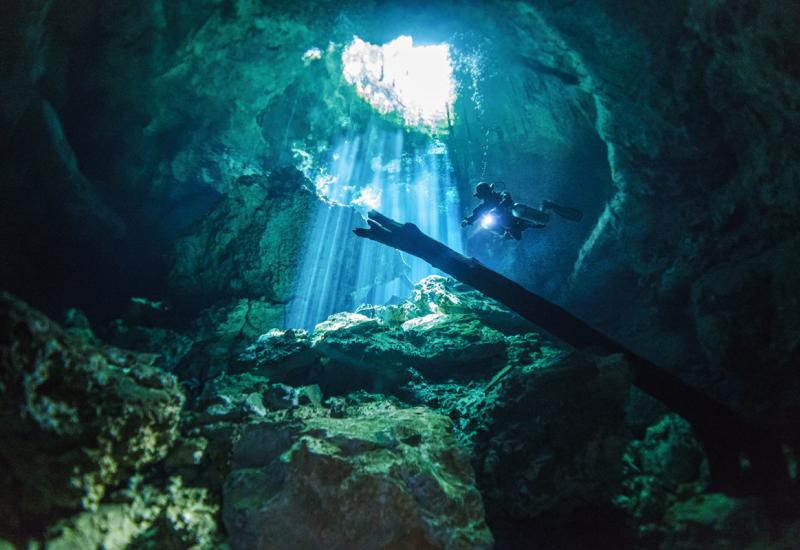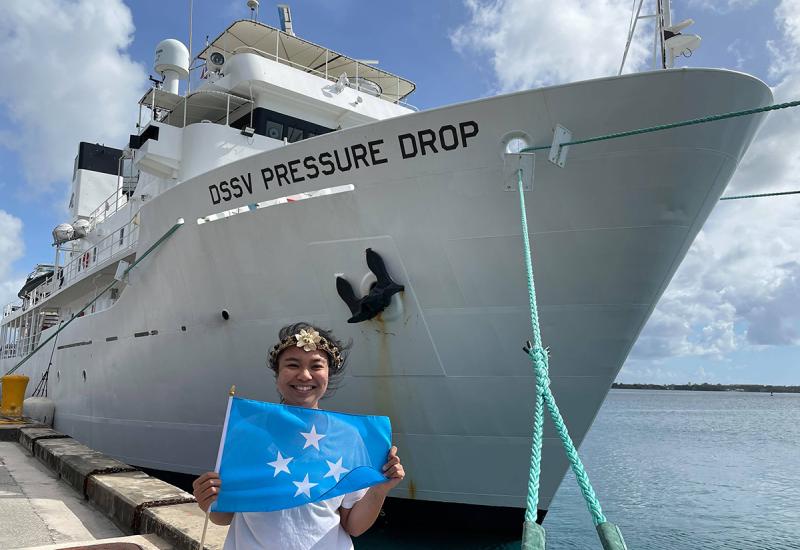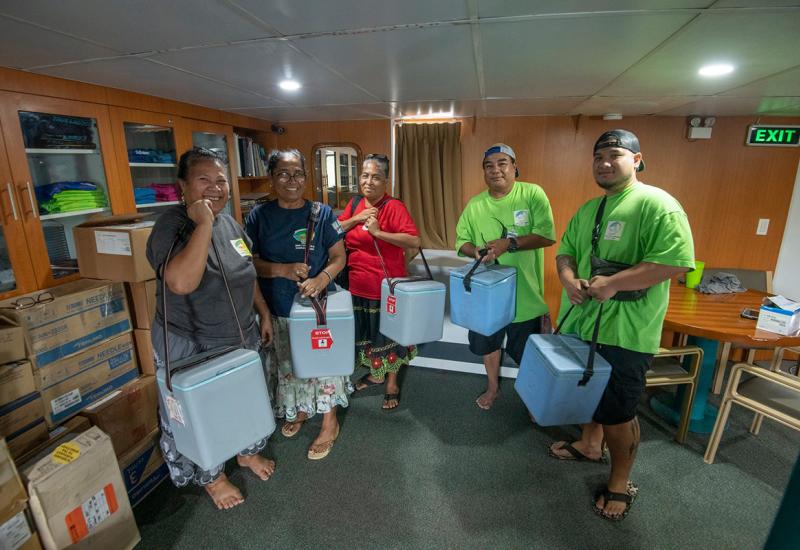The Best of Micronesia for Scuba Divers — The Ultimate Dive Planning Guide
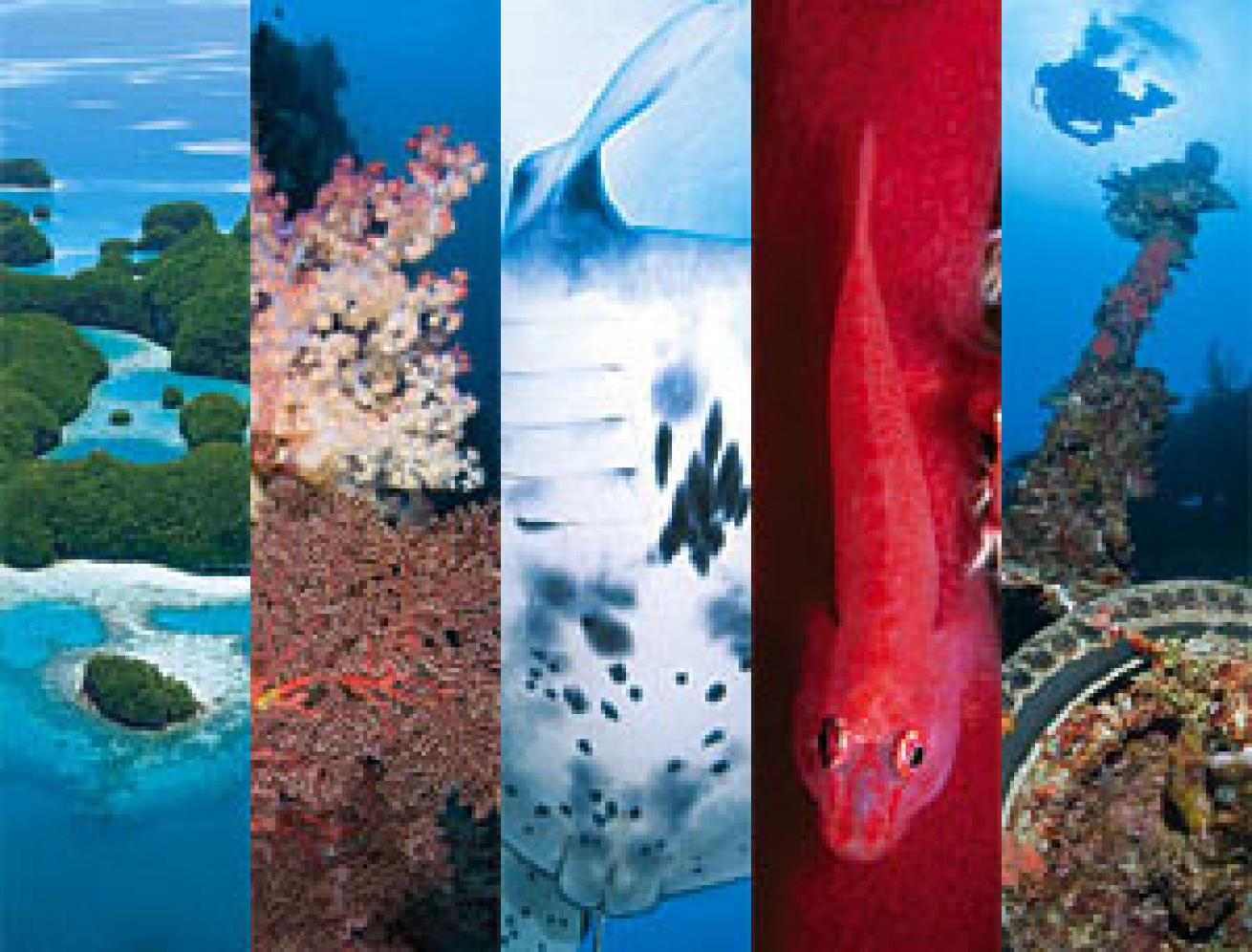
Though they're sprawled across a swath of western Pacific Ocean that's roughly the size of the continental U.S., Micronesia's palm-fringed spits of land are tiny in terms of land mass. They may be small, but these islands are huge in the dive world, encompassing nearly all of the ingredients that make for a world-class scuba destination — storied World War I- and II-era wrecks, stunning hard and soft coral gardens, dramatic walls, electric drift dives and eye-popping big animal encounters — plus don't-miss topside attractions. To make the most of a trip to Micronesia and sample its diverse underwater riches, it's best to incorporate several islands into your itinerary. Your experience will differ depending on where you dive, so we've compiled the best of what the islands of Micronesia have to offer, from their dive sites to their topside adventures.
Palau

At the western edge of the Pacific, just a scant 500 miles from the Philippines and Indonesia, lies arguably the most diverse island chain in all of Micronesia. Palau is made up of more than 350 islands, including the mind-blowing, mushroom-like Rock Islands, situated at the rich, biodiverse intersection of the Pacific Ocean and Philippine Sea. Its waters boast more than 1,300 species of fish and more than 800 species of corals and sponges. You'll find myriad dive experiences, including big pelagic encounters, tranquil coral gardens, current-swept drop-offs, and a collection of World War II wrecks that are a major draw in and of themselves.
The Diving
Profile For land-based divers wanting the best of both worlds, speedy boats zip to most of the major dive sites in under an hour. Most sites are located off some of the most photogenic islands in the world. Live-aboards also ply these waters, focusing on the southwestern section of the barrier reef to keep divers near the most popular sites.
Top Sites
Blue Corner Chances are your dive boat won't be the only one at this popular site. This current-swept wall just off Ngemelis Island, about an hour southwest of Palau's capital Koror, is washed by a strong current. Just hook yourself onto a rock or piece of dead coral at the lip of the wall and watch the parade of gray and white-tip reef sharks, mackerel, tuna, trevally, Napoleon wrasse, lionfish, turtles and spotted eagle rays surfing the current.
Ulong Channel This dive, just off Ulong Island and site of Survivor: Palau, is among the island nation's best. Start on a beautiful reef teeming with life, and hook into place at the channel's mouth to soak in the show. Then enter the channel, drifting past enormous fields of lettuce coral and lush stands of soft corals.
Peleliu Express The walls off Peleliu Island are awash in current, making for great drift diving. Currents at this site, at the island's southern tip, can be howling — next stop, Papua New Guinea — and are not for the inexperienced. But they also attract sharks, barracuda, tuna, rays, Napoleon wrasse, sweetlips, and schools of jacks and snapper.
Helmet Wreck If you like a wreck au naturel and packed with artifacts, this one's for you. This ship actually has no documented name (it's also known as the Depth Charge Wreck), and it's believed to have been commandeered by the Japanese from somewhere in Southeast Asia. It took seven 500-pound bombs and four rockets to sink it and its cargo of war materiel, including stacks of combat helmets. The stern is in 45 feet of water while the bow's in 110 feet.
Surface Intervals
Snorkel Jellyfish Lake Arrange a guided trip to Jellyfish Lake, one of 70 marine lakes and coves scattered in the Rock Islands off the coast of Koror. Here, you can get close to millions of pulsing mastigias jellyfish, which have such tiny stinging cells most people are not affected by them.
Kayak the Rock Islands You may not have the time to spend a week kayaking, diving, snorkeling and camping around the Rock Islands, but if you can get away for a day or so, you can squeeze in a mini-kayaking trip through these islands — and it's well worth the effort. Guided tours are available. visit-palau.com
****What Makes It Special****
If there were a diving Hall of Fame, Palau would be one of the first inductees. The nation possesses the most diverse diving opportunities in the region, for all skill levels, set among some of the most oft-photographed islands in the world.
Guam
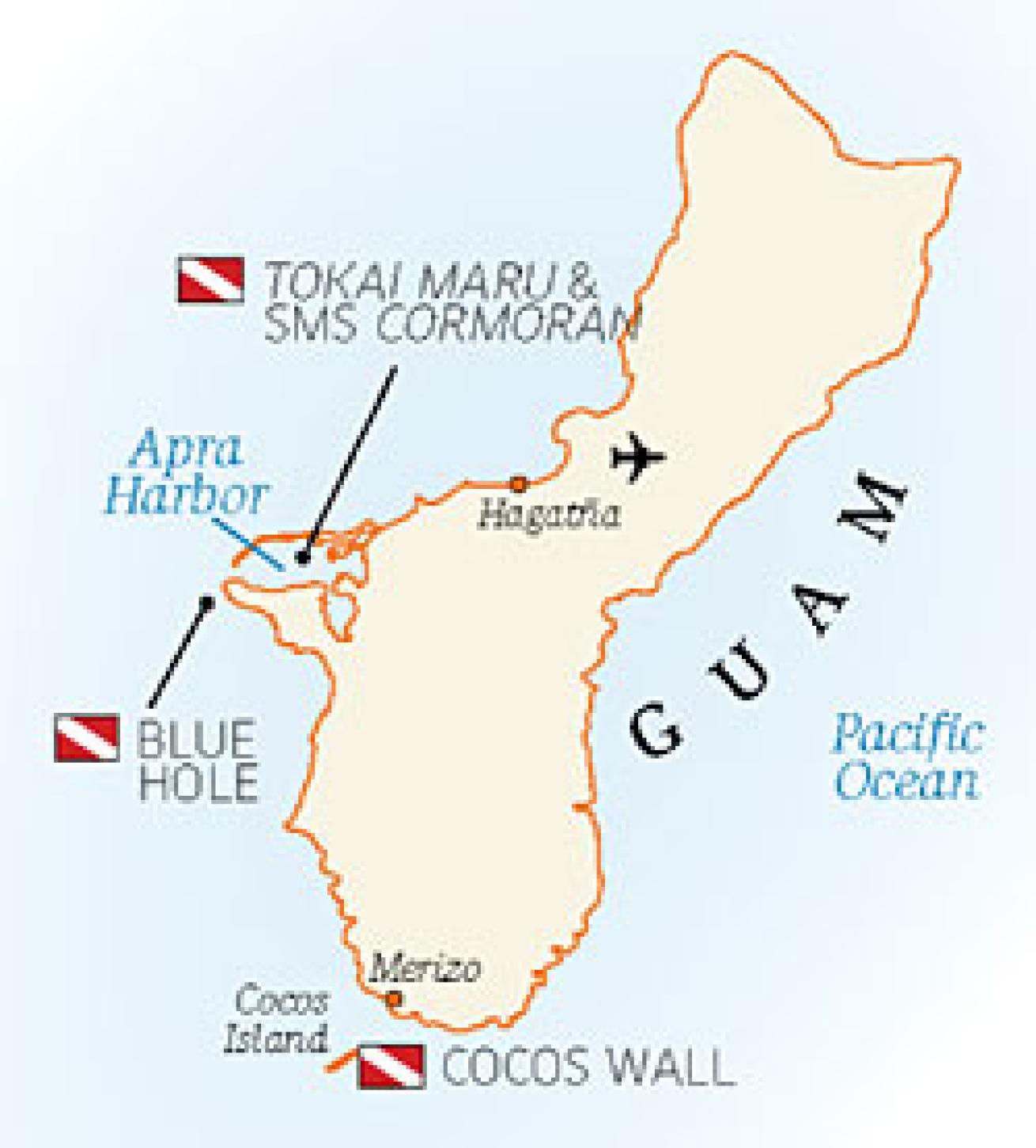
For most divers making their pilgrimage to Micronesia, Guam is little more than a stepping stone on their way to Palau, Yap and Chuuk. Shame on them! The largest island in Micronesia in both area and population, Guam offers divers the most developed tourism infrastructure in the region, with dozens of hotel, restaurant, nightlife and topside options, as well as some very unique diving opportunities. Although it's the longest-held U.S. territory in the western Pacific — it became a possession after the 1898 Spanish-American War — you're much more likely to encounter Japanese tourists strolling past the Hagatña commercial district's duty-free and haute couture shops than Americans, despite the large military presence. The scene is a far cry from a little more than six decades ago, when the island was the scene of intense fighting; it was captured by Japanese forces in 1941 and recaptured by U.S. troops in the Battle of Guam in '44.
The Diving
Profile The island boasts nearly 1,000 species of fish, 400 varieties of corals and 1,400 species of mollusks on more than 20 documented dive sites, primarily scattered along Guam's leeward edge, as well as wrecks from two World Wars sitting adjacent to each other in Apra Harbor, which you can explore on a single tank.
Top Sites
Blue Hole This is easily Guam's most popular site, a large hard and soft coral-lined shaft cut into the reef in 60 to 300-plus feet of water.
SMS Cormoran/Tokai Maru When the Japanese Tokai Maru was sunk by a U.S. submarine in World War II, the vessel came to rest right next to the World War I-era German SMS Cormoran at the bottom of Apra Harbor. Unlucky for them, but lucky for you — you can dive both wrecks on one dive.
Cocos Wall This is one of Guam's most dramatic sites off the island's southwestern coast, a deep drift dive where sharks, schooling fish and other pelagics are common.
Surface Interval Visit the Plaza de España These graceful Spanish ruins and spacious grounds in the middle of the capital city Hagatña once served as the Governor's Palace from 1669 until World War II. The Governor's Palace was totally destroyed in 1944 during the liberation of Guam, but parts of its original foundation can be seen. Other structures, including the Azotea, Chocolate House, Tool Shed, Siesta Shed and Spanish Walls, either survived or have been restored. visitguam.org
What Makes It Special
Micronesia's largest island, and commercial and transportation hub, with lots of infrastructure and diving possibilities.
Kosrae
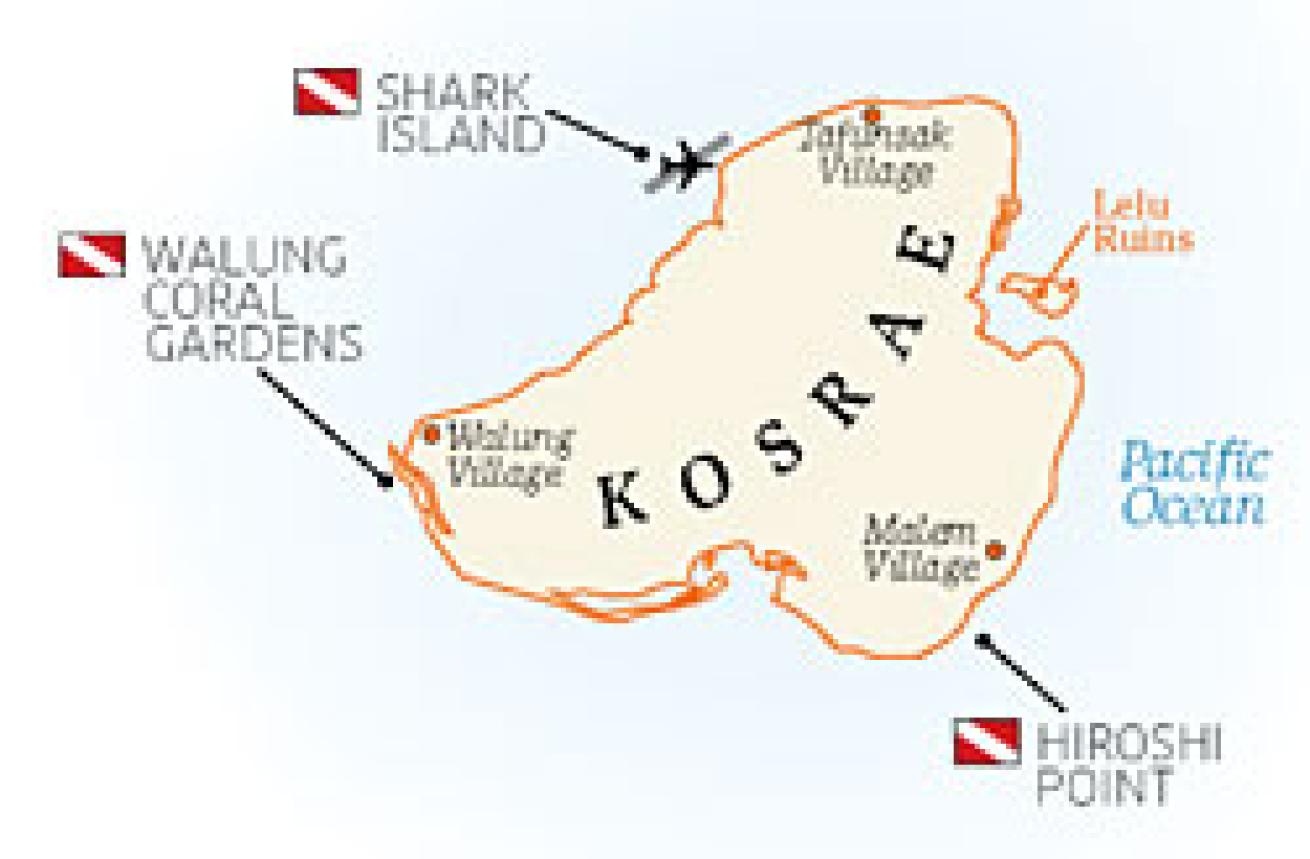
Often the most interesting places lie at the end of the bumpiest dirt roads. Kosrae, at the easternmost edge of the Federated States of Micronesia, is one of the most isolated of Micronesia's main islands, geographically as well as tourism-wise. While not typically the first choice for divers making the journey to the western Pacific, it pays off with a pastoral, mountainous island that's more reminiscent of Bora Bora than the flat, featureless Marshall Islands to the east. Congregational missionaries arriving in the mid-1800s were among the first outsiders to make contact with Kosraeans, and religion has an enormous impact on island life to this day. If your stay on the island includes a Sunday, plan to do nothing more than laze at your resort and enjoy the peace and quiet.
The Diving
Profile The abundance of soft corals tends to decrease from west to east in Micronesia, so Kosrae is dominated by a fringing reef packed solid with hard corals. These coral gardens slope down gradually, providing depth profiles for all levels.
Top Sites
Shark Island Just off Kosrae's airport lies Shark Island, a current-washed wall dive populated by sharks, rays, tuna, Napoleon wrasse, barracuda and turtles.
Walung Coral Gardens It's a signature Kosrae hard coral garden, tended by throngs of tropical reef fish, macro critters as well as schooling fish. Don't forget the camera.
Hiroshi Point Among Kosrae's most popular dives, this site can be done from boat or shore, night or day, and is even good for snorkelers.
Surface Interval
Tour Lelu Ruins Once the center of an ancient empire dating back to the 13th century, the Lelu ruins include many of the high chiefs' dwelling compounds, royal burial compounds and a few sacred compounds. visit-fsm.org/kosrae/sights.html
What Makes It Special
A naturally beautiful off-the-beaten-path island for divers looking for something unique, plus a relatively preserved Micronesian culture.
Chuuk
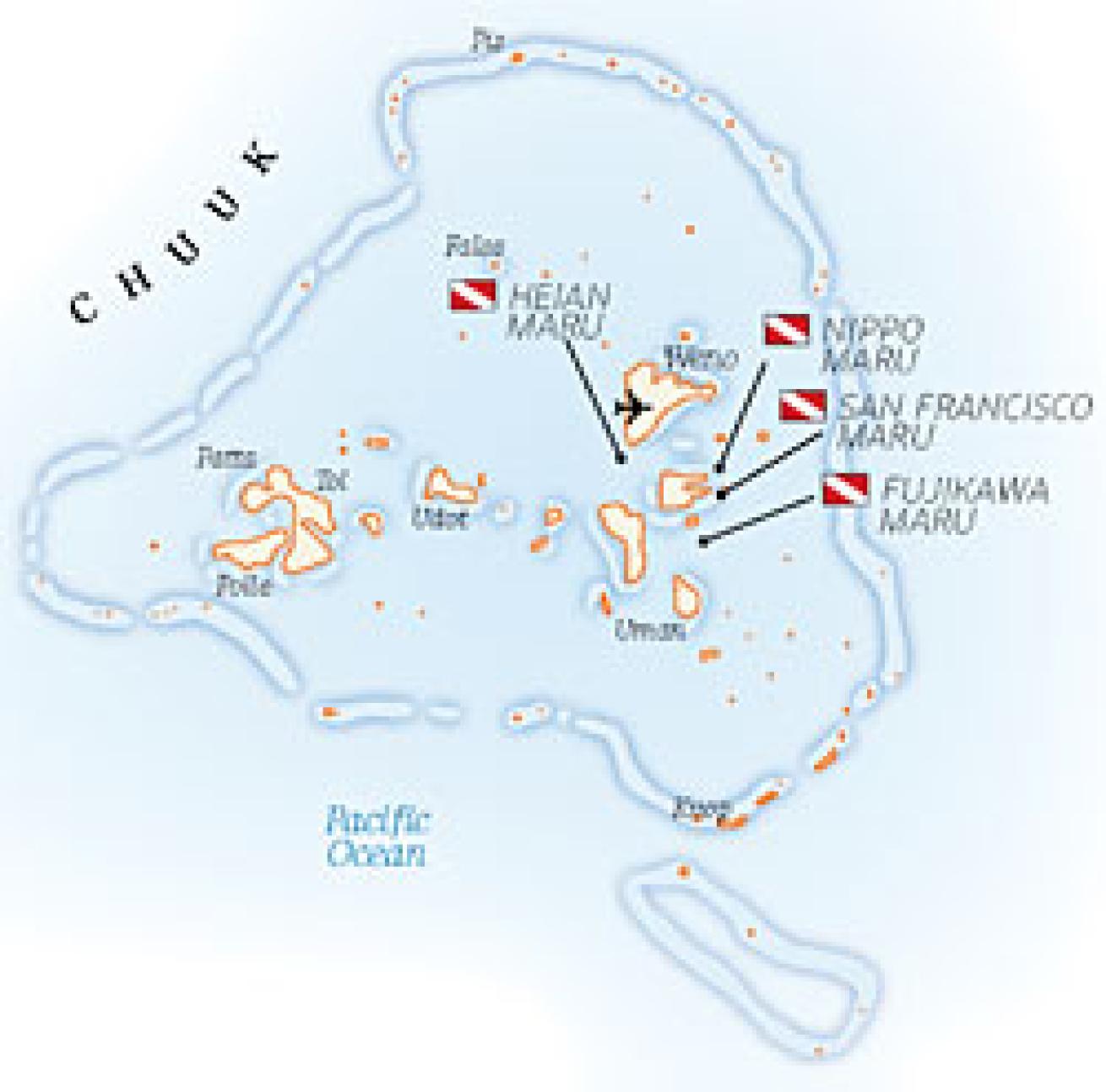
It's no surprise that this enormous 50- by 30-mile lagoon, among the world's largest, was deemed an attractive, strategic location for the Empire of Japan to place its main naval base in the Pacific during World War II. From here, attacks were launched against allied forces in the Solomons and New Guinea. In 1944, the United States retaliated against the Japanese with Operation Hailstone, sinking dozens of warships and merchant vessels, and destroying hundreds of aircraft. This scene of great tragedy is now a dramatic backdrop for divers, who come here to dive on one of the greatest concentrations of diveable shipwrecks on earth, nearly 70 in the lagoon alone.
The Diving
Profile Land-based dive operations visit Chuuk's most popular wrecks on a daily basis. Many divers opt for the convenience of live-aboards based in the lagoon to maximize their diving potential. All operations also offer occasional trips to the outer reef for exploratory shark dives.
Top Sites
Fujikawa Maru This 433-foot aircraft ferry, sunk during Operation Hailstone when a single aerial torpedo struck amidships, is probably Truk's most popular dive, both during the day and at night. Resting upright in 130 feet of water, her masts break the surface, with the deck at 70 feet.
Nippo Maru This 353-foot cargo ship was used by the Japanese navy as a water transport during World War II. It lies on the bottom at 165 feet with a slight list to port; its picturesque deck is at 130 feet and its deck guns are in 50 to 150 feet of water.
Heian Maru Used by the Japanese navy as a submarine tender, the Heian Maru was struck by a torpedo during Hailstone and sank quickly. The largest wreck discovered in the lagoon, the vessel lies on its starboard side at 110 feet; the holds are from 60 to 80 feet.
San Francisco Maru This is a deep dive--the deck is at 165 feet, the bottom at 200--but this 385-foot World War II Japanese cargo ship, with its stores of tanks, trucks, bombs and ammo, is a special dive.
Surface Interval
Explore the Tonata Guns and Caves Natural caves on Weno and other islands in Chuuk were fortified and used by the Japanese forces, and are a somber reminder of World War II. The Tonata installations on Weno are typical of those found throughout the islands. visit-fsm.org/chuuk/index.html
****What Makes It Special****
Micronesia's undisputed wreck mecca, a must-dive for aficionados of sunken World War II history.
Yap

Perhaps no other island in the western Pacific so embodies traditional Micronesian culture like Yap, where you'll find "stone money" in front of village meeting houses and it's not uncommon to see bare-breasted women walking around. But the island group boasts more than its fascinating culture. It is best known among divers as a place to encounter large manta birostris, or manta rays. These acrobatic animals can be found consistently in Yap's channels between December and April, their mating season. Yap also has plenty of other logbook-worthy dive experiences--including shark encounters, caverns, walls and special twilight dives to observe the elusive mandarinfish — and its barrier reef is among the healthiest in the Pacific. An added plus is its visibility, consistently over 100 feet, making it easy to spot passing sharks or dolphins.
The Diving
Profile Divers quickly become familiar with Mi'il and Gofnuw channels where most of the big manta action takes place. But there are more than 30 dive sites ringing the island, including reefs, passes and drop-offs.
Top Sites
Mi'il and Goofnuw Channels This is where the magic happens. Mi'il Channel on the northwestern side of Yap and Goofnuw on the northeastern side are where mantas drive through cleaning stations, and divers gather to watch the spectacle. They congregate in Goofnuw in summer and early fall, Mi'il the rest of the year. Divers nestle into the channel bottom, trying not to move around and stir up particulate matter, reducing visibility.
Lionfish Wall Veteran divers realize there's more to Yap than just manta birostris. Lionfish Wall is an exemplary site, with a dramatic drop-off in 15 to 150 feet of water, home to leaffish, scorpionfish, and of course, tons of lionfish. The visibility here is far superior to that in the channels where mantas congregate.
Surface Interval
See Stone Money The U.S. dollar may be the official currency in Yap, but stone money — rai — is still legal tender locally and used for the payment of dowry or the purchase of land. Yapese warriors sailed 200 miles to Palau many centuries ago to quarry the giant stone money, sometimes as big as 12 feet in diameter. Individual pieces are found all over Yap, but most are kept in "Stone Money Banks" in the island's villages. visit-fsm.org/yap
What Makes It Special
Yap offers guaranteed manta encounters, as well as some surprisingly good wall and reef dives, all wrapped in a traditional Micronesian setting.
Pohnpei
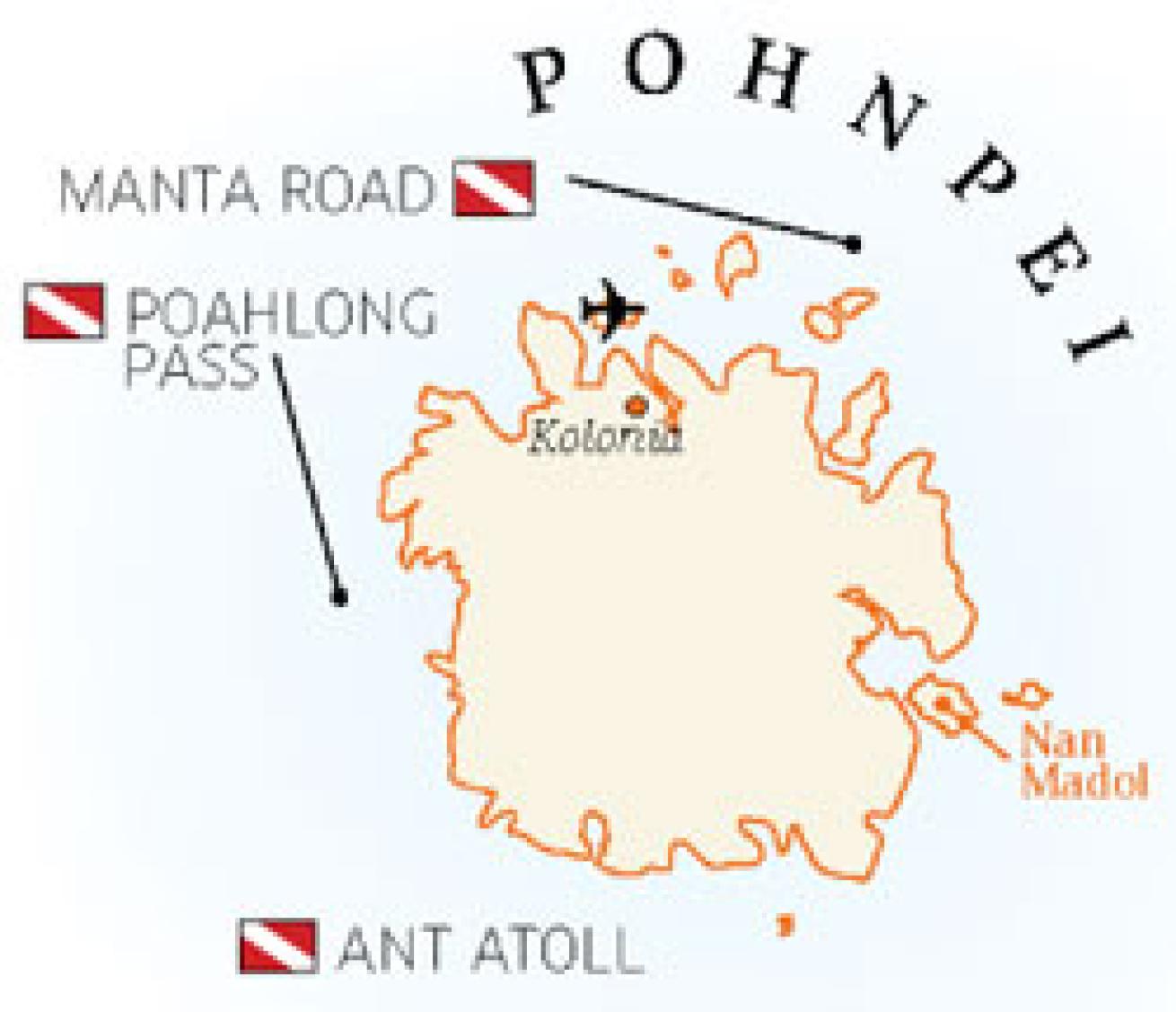
In Micronesia, Pohnpei is a place of superlatives--the capital of, and largest, highest and most populated of the Federated States of Micronesia's 600-plus islands. Its lush, jagged peaks evoke images of Tahiti, punctuated by majestic waterfalls that result from some of the planet's most intense rainfall, often more than 300 inches annually. The fascinating archaelogical site of Nan Madol can be snorkeled, and at times, dived, creating one of the most unique aquatic experiences in all of Micronesia. But the real diving action takes place at sites along the island's barrier reef, and drift diving at the atolls of the state's outer islands.
The Diving
Profile The Federated States of Micronesia's largest island is surrounded by an enormous, nearly circular barrier reef, which provides the best diving and visibility. Depending on weather, operators will also take divers to nearby Ant Atoll.
Top Sites
Poahlong Pass One of Pohnpei's most popular sites is reminiscent of Palau's Blue Corner, with strong currents animating a menagerie of sharks, large schools of fish, and barracuda.
Ant (Ahnd) Atoll About 20 miles southwest of Pohnpei's capital of Kolonia lies Ant Atoll, with its lagoon ringed by palm-fringed white-sand beaches. A single passage in the lagoon makes for electrifying diving, with sharks and big pelagics making regular appearances.
Manta Road Want a little Yap with your Pohnpei dive experience? Dive Manta Road, where you'll find the eponymous creatures, along with eagle rays, wrasses and white-tip reef sharks, all in a narrow channel painted with hard and soft corals. The current here can move along at faster than a five-knot clip.
Surface Interval
Tour Nan Madol Micronesia's best known archaeological site, Nan Madol was the ceremonial and political seat of the Saudeleur dynasty. Off the eastern shore of Pohnpei, the city consists of a series of small artificial islands linked by a network of canals and is often called the Venice of the Pacific. You must get permission and pay a small fee to visit. visit-fsm.org/pohnpei/index.html
What Makes It Special
Pohnpei is a lush gem of an island that boasts some of the most photogenic scenery in all of the Federated States of Micronesia, as well as intriguing remote dive sites and fascinating archaelogical ruins.
Dive In
Getting There: International flights connect through Guam (GUM) or Honolulu (HNL). Each island airport has its own customs and immigration officers; if you plan on visiting several islands on one trip, you'll pass through customs and immigration lines at each stop.
Dive Conditions: Water temps are in the high 70s to mid-80s year-round. Up to 100 feet of vis is not uncommon, though it can be slightly lower in Chuuk Lagoon and on manta dives in Yap.
Weather: Mid- to high 80s year-round.
Money Matters: Currency is the U.S. dollar.


